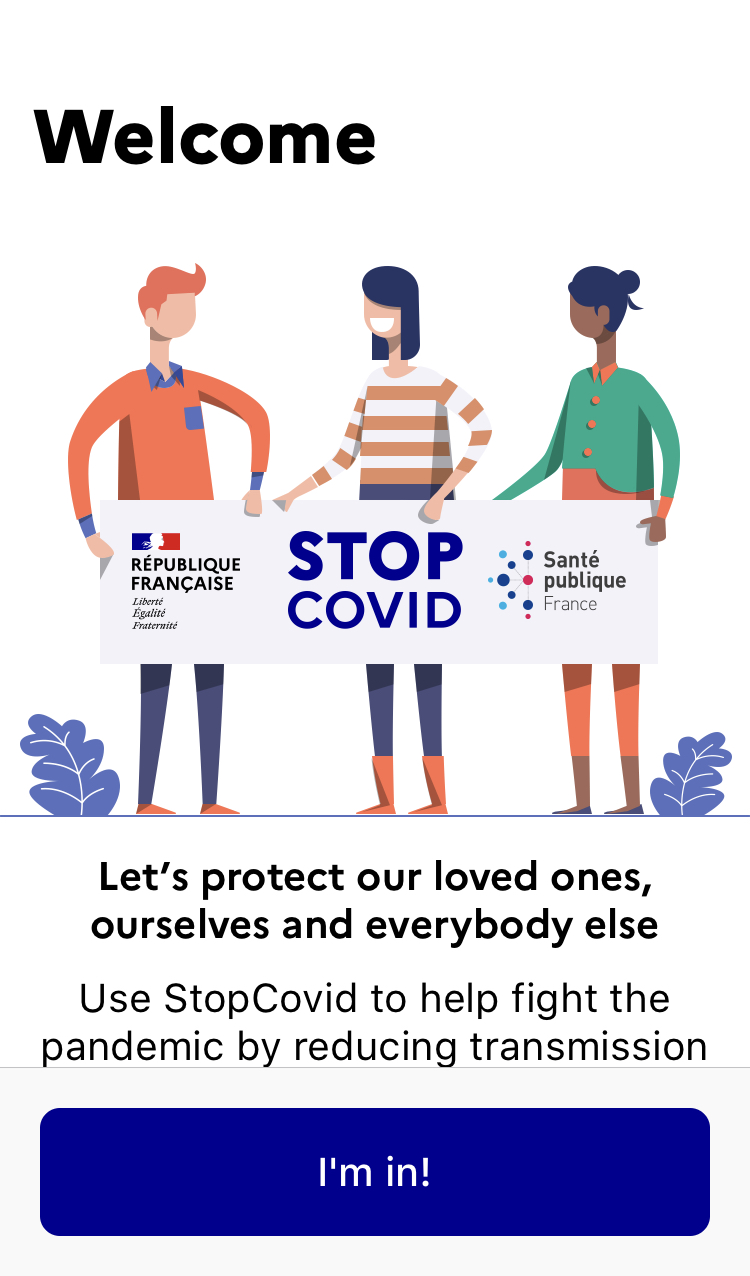After three brutal months of sitting at the epicenter of the coronavirus pandemic, almost two-dozen governments across Europe have released Covid-19 contact-tracing apps. These apps, they claim, are integral tools to maintaining a fragile new normal.
There’s just one problem: nobody is using them.
Germany’s state-developed Corona-Warn-App, one of the most popular contact-tracing in Europe, is estimated to have been downloaded by just 14.4 percent of the population, according to estimates released Wednesday by the mobile analytics firm Sensor Tower. (Firms like Sensor Tower plug in a combination of public data from app stores and user data into statistical models which then provide estimates.)
Their estimate for the Italian government’s Immuni app drops down to 7.2 percent of the population. And for France’s StopCovid it’s a mere 3 percent, translating to just 14 notifications being sent out since June 2nd telling users that they’ve been in proximity with an infected person.
This is a problem, professor Dirk Brockmann, a researcher specializing in computational epidemiology at the Robert Koch Institute (the German equivalent of the CDC) wrote in an email to Motherboard, because contact-tracing apps become exponentially less effective with each person who doesn’t use them.
“The relationship between coverage X (percentage of users that participated) and reconstructed encounters Y (links between people) is quadratic: Y = X^2,” he wrote. “That means if 10 percent of users have the app only 10 percent of their contacts are also users. 10 percent of 10 percent is just 1 percent of all contacts.”
In other words, with just 10 percent of a population using a contact-tracing app, 99 percent of all transmissions go undetected. A recent study from Oxford estimated that for contact-tracing to be effective, at least 56 percent of the population needs to use the app.
Not great numbers, and ones which also beg the question: why have such a wide swathe of Europeans been hesitant to download contact-tracing apps?
Privacy Concerns
One reason is privacy. Almost immediately the idea of contact-tracing apps was met with skepticism by critics who felt they could be weaponized to spy on citizens.
It’s pretty clear why developers quickly abandoned the idea of using location data. Instead, they opted for Bluetooth Low Energy, which allows devices in close proximity to communicate data. Most contact-tracing apps also don’t store any personal information, such as names or phone numbers, and the cryptographic key broadcasted by a user’s phone changes every couple of minutes. In an extra effort to be transparent, the source code for just about every app can be found on GitHub.

Yet, while Germany’s Corona-Warn-App may have received a rare nod of approval from Europe’s most prominent association of hackers–Chaos Computer Club–other corona apps have continued to be hounded by privacy questions.
France’s StopCovid app, for example, was blasted by academics and security experts in an open letter for using a centralized server. Germany and Italy’s apps, by contrast, rely on a decentralized API developed by Apple and Google.
Technical Faults
If Europeans were already uneasy about using contact-tracing apps, blunders on behalf of their governments did little to boost confidence.
In the Netherlands for example, development firms were only given 72 hours to come up with a proposal for a contact-tracing app. Unsurprisingly, all 750 proposals were later rejected because they weren’t complete enough to meet the security and privacy criterion.
There’s also the question of how well these apps actually work. In a survey of 800 Italians who chose not to download the national contact-tracing app conducted by the software analytics firm SWG, nearly half of the respondents claimed they did so because they thought it wasn’t effective.
Even experts have their doubts.
Professor Esther Rodriguez Villegas of Imperial College London was developing her own contact-tracing app with a team of volunteers. She later stopped development after she claims Apple told her team they would only allow one government-sponsored app per country to be published on the App Store.
One of the difficulties in developing contact-tracing apps, she says, is determining the criteria of what actually constitutes contact between two users. She considers the weighted “risk factors” used by the Apple and Google API, for instance, to be oversimplified.
“I think it’s important to convey how challenging it is to actually create an app that works effectively,” she told Motherboard. “Just because there’s an app out there doesn’t mean it’s doing a good job.”
And with few governments publishing testing data, it’s hard to actually know.
Complacency
Then there’s the changing atmosphere around the coronavirus. With lockdowns in most of Europe all but lifted, infection rates at a fraction of their peak in March and April, and borders reopened, Europeans have returned to some imitation of normal life.
As the pandemic moves further out of mind, Europeans have started reading less coronavirus-related news, and basic measures, such as the once cardinal 1.5m (6ft) rule are being flouted–both domestically and by vacationers.
But with cases gradually beginning to rise again across the continent, cases still spiking in the United States, and experts warning of a possible second wave in the fall, the ability to turn a blind eye may not last forever. In that event, contact-tracing apps which are flopping now could become useful tools later, especially if governments pitch them as a way to avoid returning to the stringed lockdowns which Europeans endured for months.
from VICE https://ift.tt/2ZNwyn9
via cheap web hosting
No comments:
Post a Comment